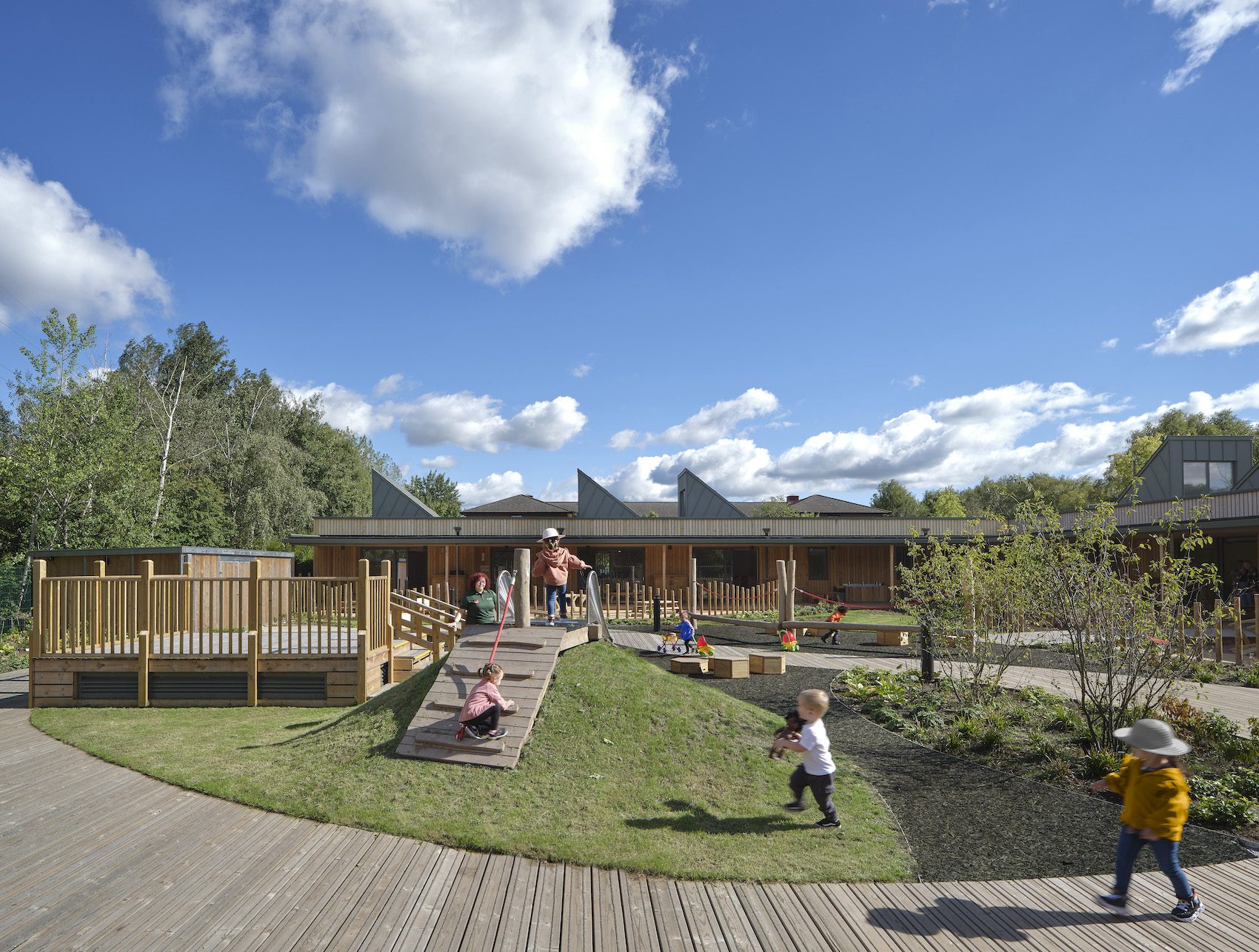Feilden Clegg Bradley Studios’ sustainable, on-campus nursery for Staffordshire University puts play, development, wellbeing and nature at the heart of early years education.
Photos
Daniel Hopkinson
Designed by Feilden Clegg Bradley Studios, in collaboration with Max Fordham, the £4.4m nursery for Staffordshire University provides 100fte places, including an observational suite with leading digital technology to facilitate applied learning for trainee teachers, social workers and university students. The associated forest school is an independent facility for 24 children of primary school age to engage in outdoor learning activities that develop skills and knowledge not possible in the traditional classroom.
“Staffordshire University has provided nursery childcare services for students, staff, and members of the public for more than 30 years,” explains Simon Branson, partner at Feilden Clegg Bradley Studios. “Its existing off-campus facilities were in need of modernisation and the university identified an opportunity to expand its offer; creating a facility that could be used by both its Institute of Education to train future teachers, and for a new Forest School initiative providing outreach programmes across Stoke on Trent.”
Ground-floor plan; section
Conceived as a natural learning environment, the highly insulated, prefabricated timber structure provides a strong visual connection to the adjacent trees and woodland. Achieving net zero carbon both in construction and in-use, the single-storey building comprises two wings that frame a landscaped play garden. Linked by a covered colonnade, the classrooms open directly on to the garden, which is designed to encourage curiosity, adventure and child-led learning, through planting, textures and natural materials. Low windows, recessed seating and external benches encourage children to explore and connect with the outside.
The design team worked closely with the nursery to choose materials that would enhance the natural feel of the spaces. These include birch-faced plywood, natural rubber flooring and wood wool ceiling bats fixed between the timber frame. Fixed timber furniture divides the spaces and houses slatted grilles for the earth tube air supply ducts that bring fresh tempered air into each space. Cement use within the building has been reduced by employing a timber floor build up in place of screed. The dimensions of the building correspond to readily available timber and cassette sizes in order to reduce wastage.
“We based the building fabric targets on Passivhaus standards, however the operation of the building meant that the doors to the play area would be open most of the year, says Iain Shaw, partner at Max Fordham. “These operational requirements led to a natural ventilation strategy rather than MVHR, as the building would never be ‘sealed’. Big open doors in summer allow as much air flow as possible, but, in winter, a separate lobbied access minimises heat loss.
The design avoids the need for mechanical cooling in order to minimise energy consumption. Key features of this strategy are the external walkway that acts as a solar shade in summer, and the earth ducts that provide ground coupling for chilled air during nap time when a lower air temperature is required.
The shaded glazing and rooflights provide good daylight in the play areas, while the sleep areas are tucked away in a darker corner of the room.
The building is heated by air source heat pumps and underfloor heating throughout, with rooftop PV providing local electricity generation. Any excess generation is fed back into the university’s network so that it is used on campus, rather than exported.
The operational carbon and embodied carbon strategies were developed hand-in-hand by the design team, and we will now embark on post occupancy evaluation to monitor the success of the building in-use and provide advice on how it can be optimised.”
Additional Images
Source: Architecture Today








